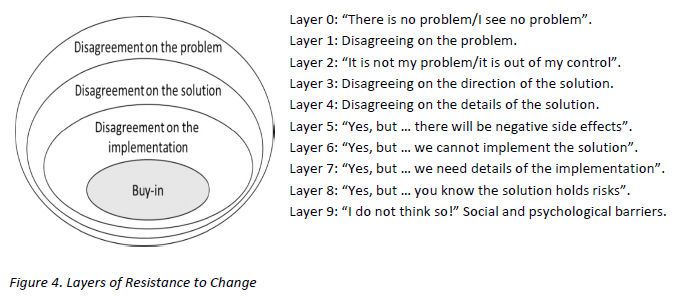Improvement implies change, but change does not imply improvement.
We have all experienced the pain of disappointment when a change that promised much delivered no improvement, or even worse, a negative impact.
We have learned to become wary and skeptical about change.
We have learned a whole raft of tactics for deflection and diffusion of the enthusiasm of others. And by doing so we don the black hat of the healthy skeptic and the tell tale mantra of “Yes, but …”.
So here is an onion diagram to use as a reference. It comes from a recently published essay that compares and contrasts two schools of flow improvement. Eli Goldratt’s “Theory of Constraints” and a translation of Systems Engineering called 6M Design®.
The first five layers can be described as “denial”, the second four as “grudging acceptance” … and the last one is the sound of the final barrier coming down and revealing the raw emotion underpinning our reluctance to change. Fear.
The good news is that this diagram helps us to shape and steer change in a way that improves its chances of success, because if we can learn to peel back these layers by sharing information that soothes the fear of the unknown, then we can align and engage. And that is essential for emotional momentum to build.
So when we meet resistance do we push or not?
Ask yourself. How would prefer to be engaged? Pushed or not?

